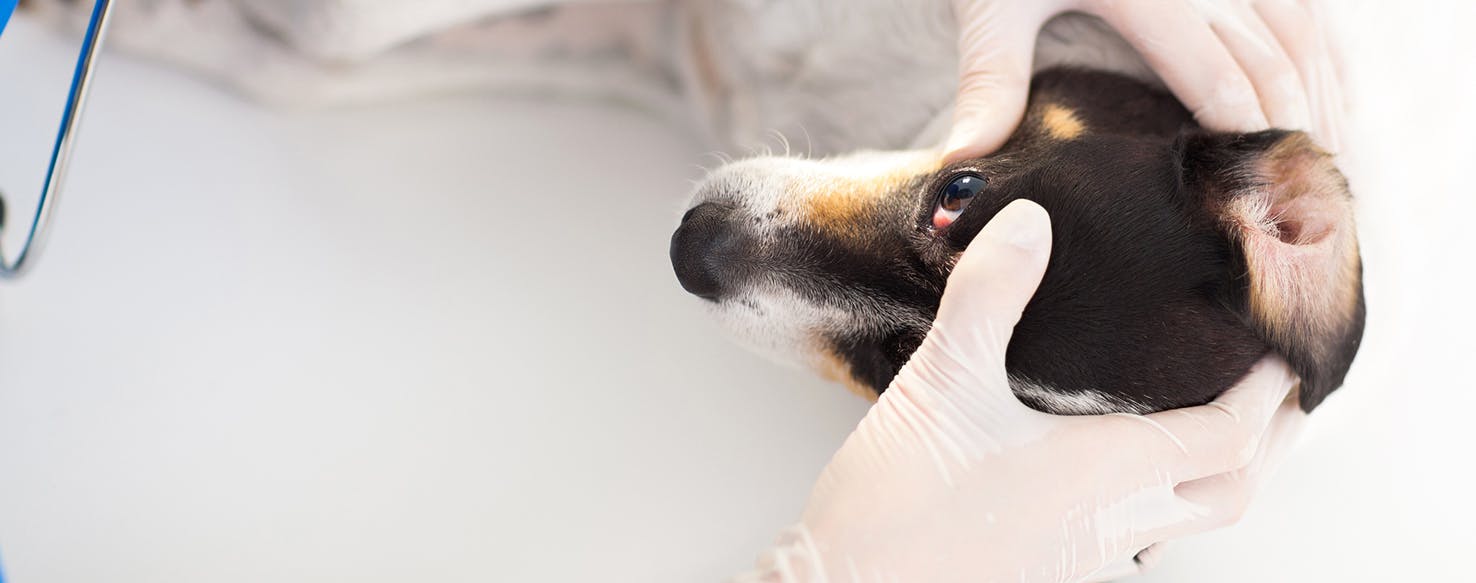
By Kevin Hughes
Published: 08/22/2017, edited: 07/23/2024
More articles by Kevin Hughes
Save on pet insurance for your pet
You don't have to choose between your pet and your wallet when it comes to expensive vet visits. Prepare ahead of time for unexpected vet bills by finding the pawfect pet insurance.
As us humans know all too well, styes can be painful, irritating and unsightly. But, can dogs get styes in their eyes, as well as people? The answer, sadly for our pups is yes — dogs can get styes in their eyes.
Here, we’ll explain what a dog eyelid stye is, what causes them, and look at how a stye can be treated.What is a stye?
A stye is a common eye infection. Also known as a hordeolum, a stye develops in or around the eye and can be a painful condition — it usually feels sore to the touch. Styes are often seen in humans, but dogs are also at risk of getting one — and a dog eye stye develops in the same way.
- By direct contact
- By inhaling the germ through droplets in the air
- By touching something that carries the germ
The culprit is a bacterium called Staphylococcus aureus, which can cause infection. It’s spread in multiple ways:
If that bacteria gets into the skin and near to the eye, it can cause a stye. A dog eyelid stye will look a lot like a small, pus-filled spot. It may also look like a swollen bump, which can look red and sore.
How can dogs get styes?
While dogs can develop styes just like humans do, it’s not typically transmitted in the same way. Dogs don’t usually come into contact with the bacteria directly, nor touch something that has the germ. Instead, changes to the immune system and trauma to the eye often cause eye infection; overgrowth of normal bacteria in the eye is another reason a style might appear quickly. A dog eyelid stye can appear on both the inner and outer side of the eyelid.
Vets call redness of the eye blepharitis. This term also covers a few other disorders, including puffiness of the eyelid.
The stye – or hordeolum — appears on the edge of the dog’s eyelid because of the bacterial infection in the follicle or root of the eyelash. It starts as a small red bump but can develop into a pus-filled abscess. The edge of the dog’s eyelid becomes swollen and red, and the eyelid itself is painful.
Is a chalazion a dog eye stye?
While they appear similar, an eye condition called a chalazion is not the same as a dog eye stye. A chalazion is an internal lump that can develop when the meibomian glands or tarsal glands get clogged up. It’s less common than a stye. It forms on the inner surface of the eyelid and presses up against the eyeball. From the outside, only swelling appears but inside, it can cause the sensation of a lump. It can continue to grow but isn’t usually painful.
How can I tell if my dog has a stye?
If you suspect your dog may have a stye, check for these common symptoms:
- Inflammation on the inside, or outside, of the eyelid
- Eye swelling
- Redness in the eye
- Broken abscess with pus
However, don’t guess. Use the symptoms checker as a guide but consult your veterinarian as the next step. A professional will be able to diagnose the condition, hopefully ruling out other possible issues. Eye conditions that could be mistaken for stye, to the untrained eye, include parasitic or bacterial blepharitis, discoid lupus erythematosus and squamous cell carcinoma — a type of skin cancer.
Because these invasive skin and eyelid diseases can have lasting repercussions — such as blindness or even the loss of an eye — any redness or swelling of your dog’s eye or lid that lasts longer than a few days should be checked by your vet.
Does your dog have an eye infection that needs vet treatment? With pet insurance cover, your pup is covered — find your perfect plan in seconds with Wag! Compare.
How do I treat my dog's stye?
If your dog definitely does have a stye, how can it be treated? Your veterinarian will be able to advise on dog stye treatment — if needed. A dog eye stye can easily clear up without any intervention at all, though in some cases it will need to be treated.
Your veterinarian may choose to carry out a bacterial culture and perform something called an ophthalmic exam to verify the eyelid involvement. They may flush the eye. A prescription for topical antibiotics might be needed, and it’s possible a systemic antibiotic will be required. The condition should clear up in about two weeks.
Vet intervention isn’t always needed. You may be able to provide dog stye treatment at home, though this should only be after discussing this with your vet. Warm compresses can be effective, as they can open up the blocked gland. Applying a compress with a gentle massage can work well.
Chamomile is known for its anti-inflammatory properties, so you can use a brewed chamomile tea bag as a compress. Make sure it has cooled down properly, before holding the tea bag to your dog’s eyelid and the affected area for a few minutes. Do this 3-5 times a day. If your dog dislikes the application, don’t continue. If you go ahead with the compress treatment, reward them for their good behavior with a treat afterwards!
You may also like
